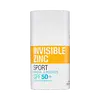What's inside
What's inside
 Key Ingredients
Key Ingredients

 Benefits
Benefits

 Concerns
Concerns

 Ingredients Side-by-side
Ingredients Side-by-side

Bis-Ethylhexyloxyphenol Methoxyphenyl Triazine
Skin ConditioningButyl Methoxydibenzoylmethane
UV AbsorberEthylhexyl Triazone
UV AbsorberOctocrylene
UV AbsorberC12-15 Alkyl Benzoate
AntimicrobialAloe Barbadensis Leaf Juice
Skin ConditioningMagnesium Aluminum Silicate
AbsorbentCetearyl Alcohol
EmollientDibutyl Adipate
EmollientDimethicone
EmollientTocopheryl Acetate
AntioxidantTetrasodium EDTA
Hydroxyacetophenone
AntioxidantCI 77491
Cosmetic ColorantCI 77492
Cosmetic ColorantPhenoxyethanol
PreservativePolyglyceryl-3 Diisostearate
EmulsifyingWater
Skin ConditioningRice Bran Wax Ethyl Esters
AntioxidantSilicon
AbrasiveSodium Hyaluronate
HumectantStearic Acid
CleansingTriethanolamine
BufferingXanthan Gum
EmulsifyingBis-Ethylhexyloxyphenol Methoxyphenyl Triazine, Butyl Methoxydibenzoylmethane, Ethylhexyl Triazone, Octocrylene, C12-15 Alkyl Benzoate, Aloe Barbadensis Leaf Juice, Magnesium Aluminum Silicate, Cetearyl Alcohol, Dibutyl Adipate, Dimethicone, Tocopheryl Acetate, Tetrasodium EDTA, Hydroxyacetophenone, CI 77491, CI 77492, Phenoxyethanol, Polyglyceryl-3 Diisostearate, Water, Rice Bran Wax Ethyl Esters, Silicon, Sodium Hyaluronate, Stearic Acid, Triethanolamine, Xanthan Gum
Zinc Oxide 27%
Cosmetic ColorantWater
Skin ConditioningGlycerin
HumectantCetearyl Alcohol
EmollientCetearyl Glucoside
EmulsifyingCyclopentasiloxane
EmollientDimethicone
EmollientGlyceryl Isostearate
EmollientPolyglyceryl-4 Isostearate
EmulsifyingHexyl Laurate
EmollientCetyl PEG/PPG-10/1 Dimethicone
EmulsifyingHydroxyethyl Acrylate/Sodium Acryloyldimethyl Taurate Copolymer
Emulsion StabilisingSodium Hydroxide
BufferingEthylhexylglycerin
Skin ConditioningPhenoxyethanol
PreservativeTriethoxycaprylylsilane
Zinc Oxide 27%, Water, Glycerin, Cetearyl Alcohol, Cetearyl Glucoside, Cyclopentasiloxane, Dimethicone, Glyceryl Isostearate, Polyglyceryl-4 Isostearate, Hexyl Laurate, Cetyl PEG/PPG-10/1 Dimethicone, Hydroxyethyl Acrylate/Sodium Acryloyldimethyl Taurate Copolymer, Sodium Hydroxide, Ethylhexylglycerin, Phenoxyethanol, Triethoxycaprylylsilane
 Reviews
Reviews

Ingredients Explained
These ingredients are found in both products.
Ingredients higher up in an ingredient list are typically present in a larger amount.
Cetearyl alcohol is a mixture of two fatty alcohols: cetyl alcohol and stearyl alcohol. It is mainly used as an emulsifier. Emulsifiers help prevent the separation of oils and products. Due to its composition, it can also be used to thicken a product or help create foam.
Cetearyl alcohol is an emollient. Emollients help soothe and hydrate the skin by trapping moisture.
Studies show Cetearyl alcohol is non-toxic and non-irritating. The FDA allows products labeled "alcohol-free" to have fatty alcohols.
This ingredient is usually derived from plant oils such as palm, vegetable, or coconut oils. There is debate on whether this ingredient will cause acne.
Due to the fatty acid base, this ingredient may not be Malassezia folliculitis safe.
Learn more about Cetearyl AlcoholDimethicone is a type of synthetic silicone created from natural materials such as quartz.
What it does:
Dimethicone comes in different viscosities:
Depending on the viscosity, dimethicone has different properties.
Ingredients lists don't always show which type is used, so we recommend reaching out to the brand if you have questions about the viscosity.
This ingredient is unlikely to cause irritation because it does not get absorbed into skin. However, people with silicone allergies should be careful about using this ingredient.
Note: Dimethicone may contribute to pilling. This is because it is not oil or water soluble, so pilling may occur when layered with products. When mixed with heavy oils in a formula, the outcome is also quite greasy.
Learn more about DimethiconePhenoxyethanol is a preservative that has germicide, antimicrobial, and aromatic properties. Studies show that phenoxyethanol can prevent microbial growth. By itself, it has a scent that is similar to that of a rose.
It's often used in formulations along with Caprylyl Glycol to preserve the shelf life of products.
Water. It's the most common cosmetic ingredient of all. You'll usually see it at the top of ingredient lists, meaning that it makes up the largest part of the product.
So why is it so popular? Water most often acts as a solvent - this means that it helps dissolve other ingredients into the formulation.
You'll also recognize water as that liquid we all need to stay alive. If you see this, drink a glass of water. Stay hydrated!
Learn more about Water